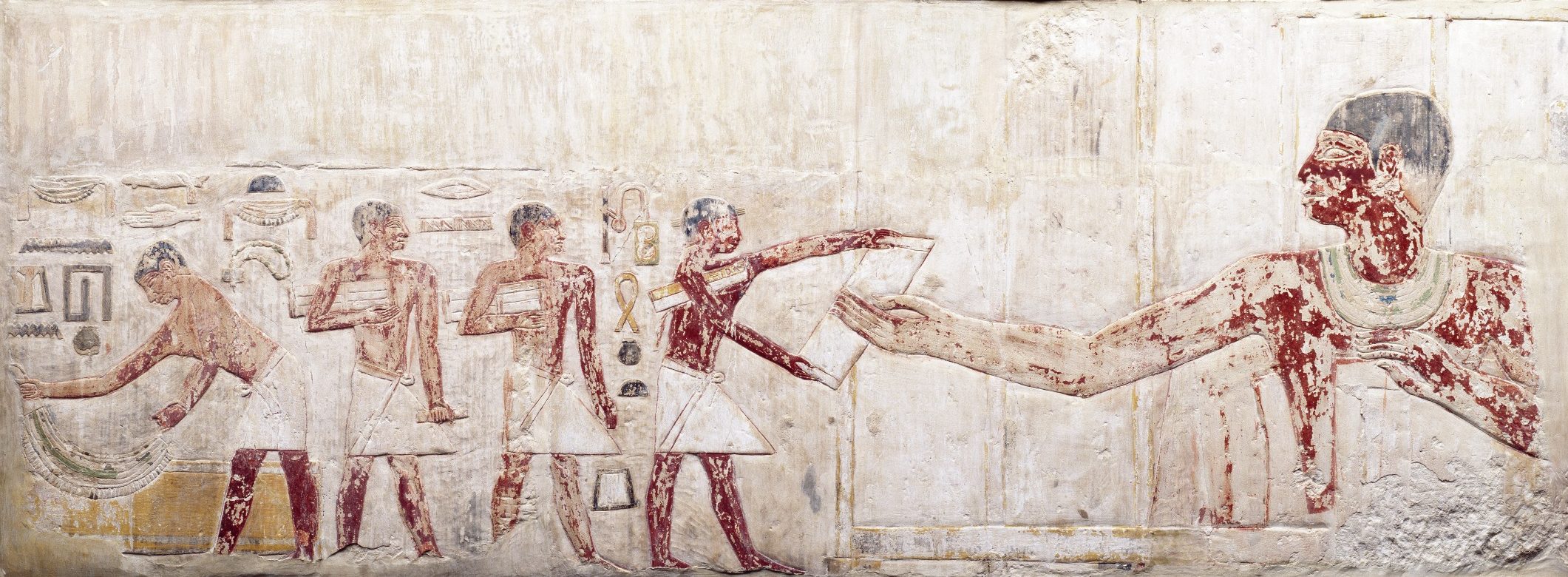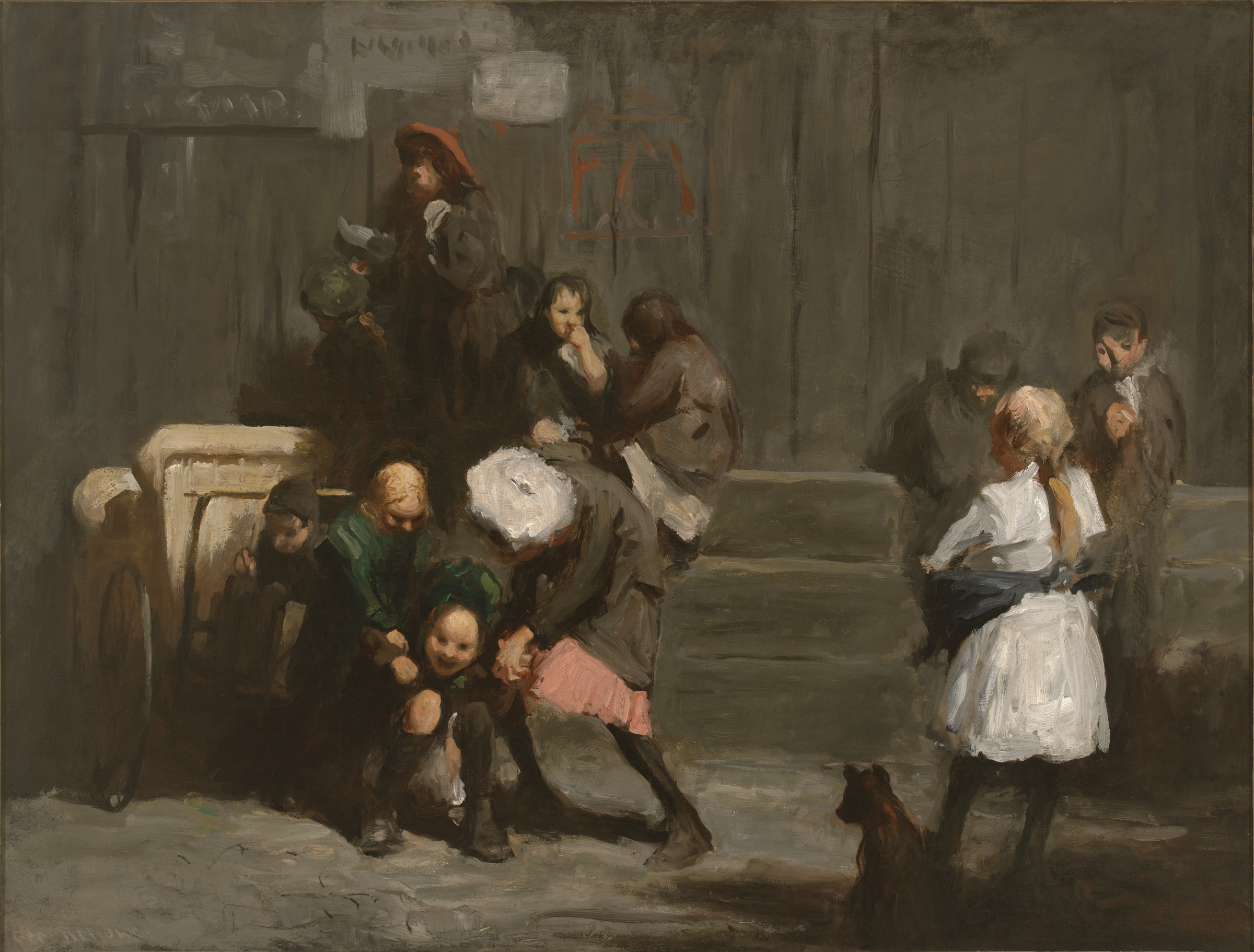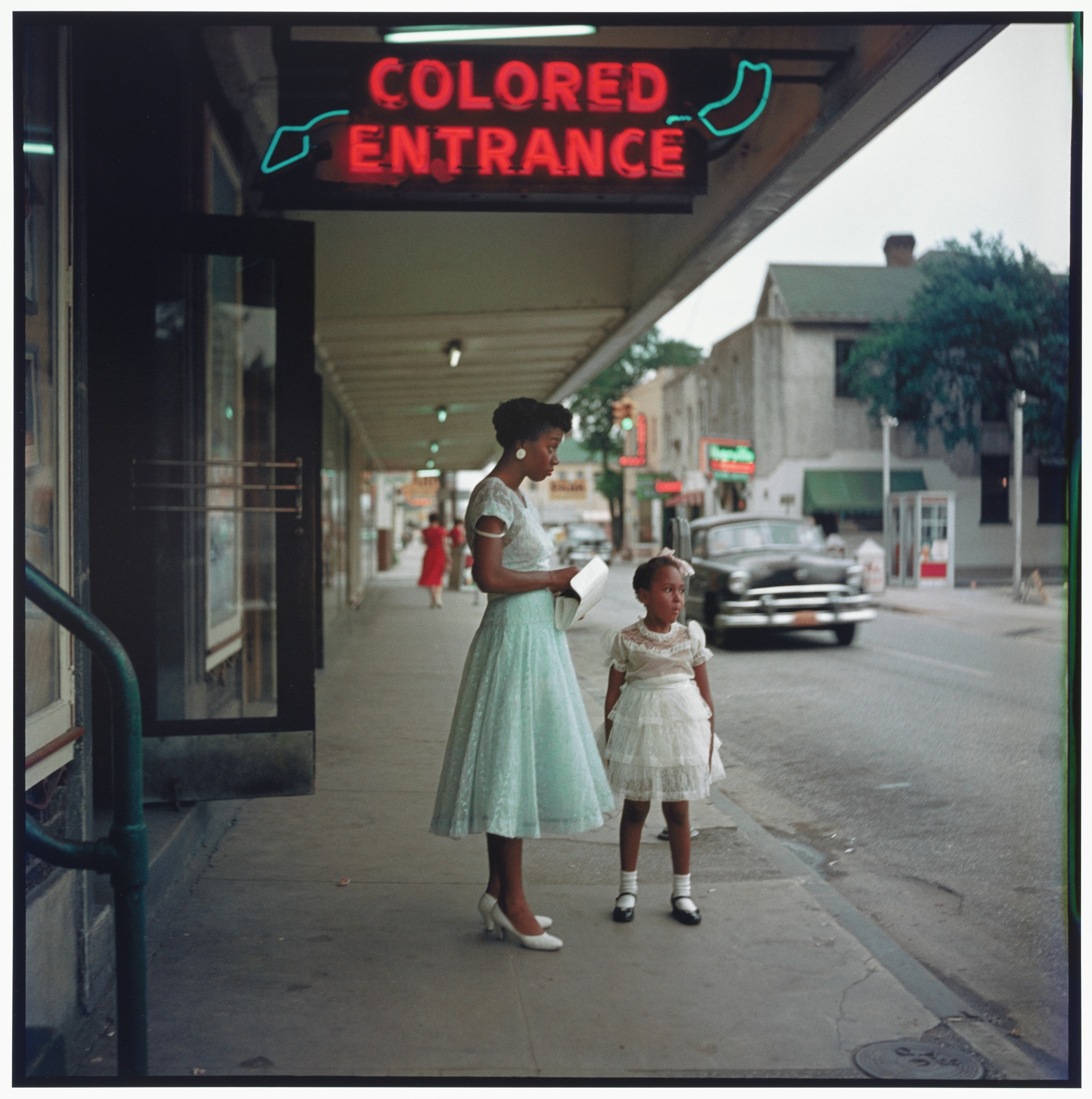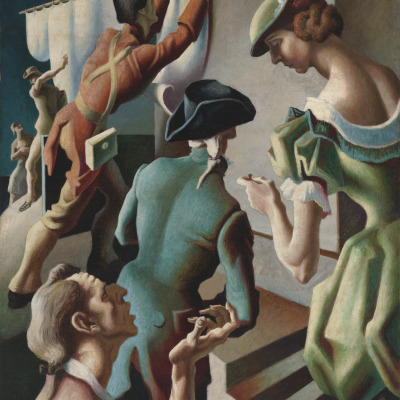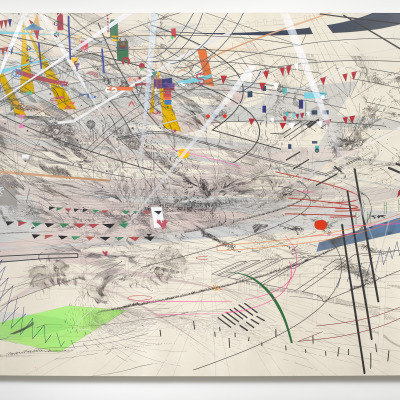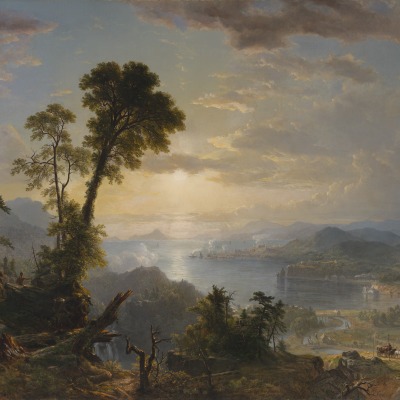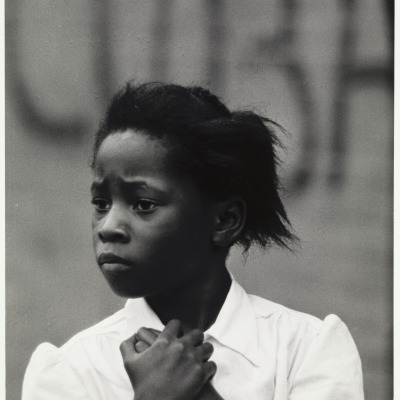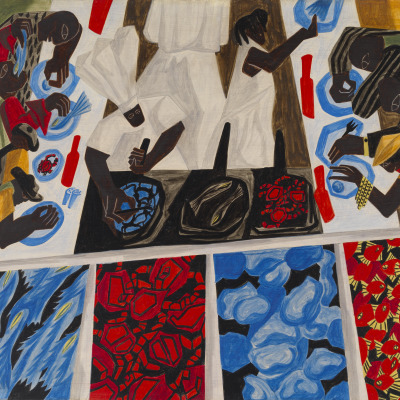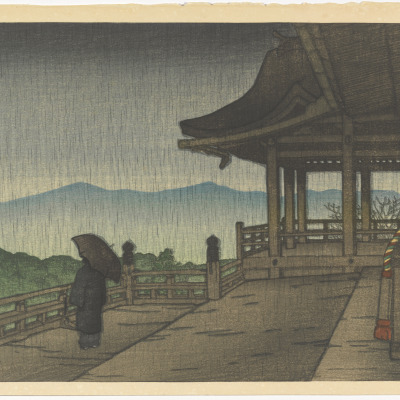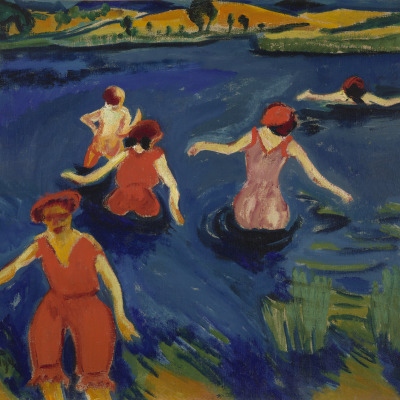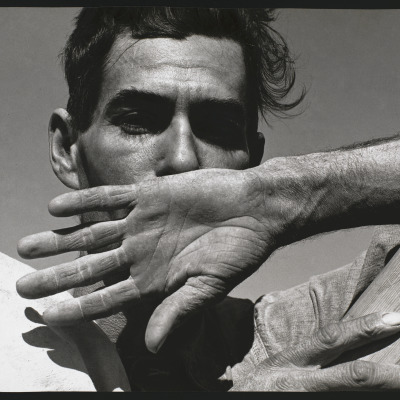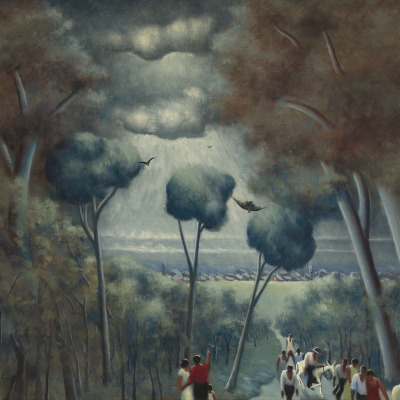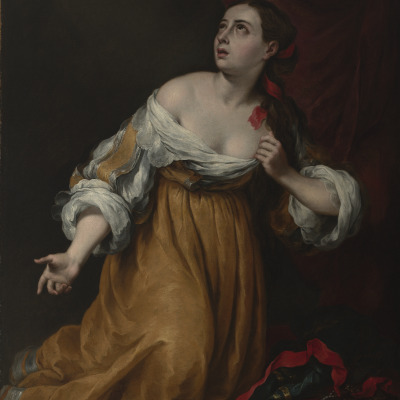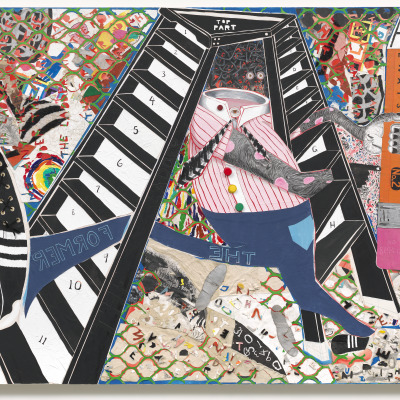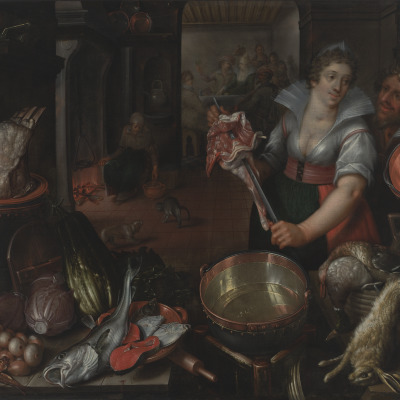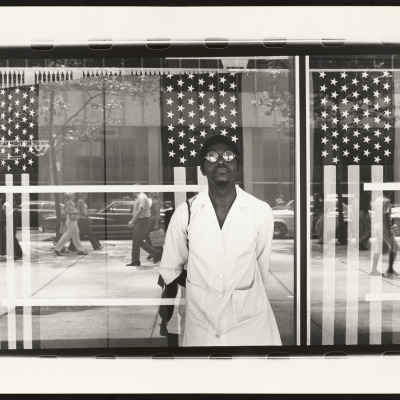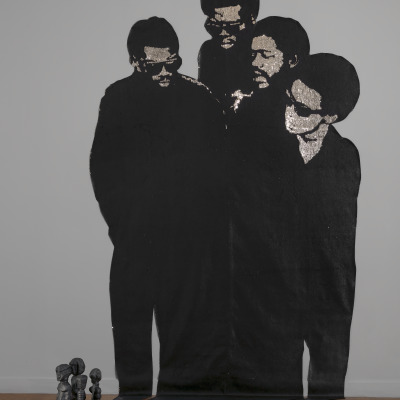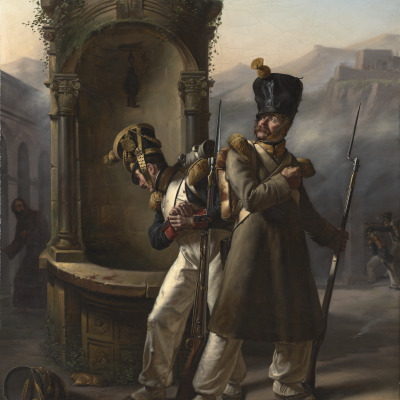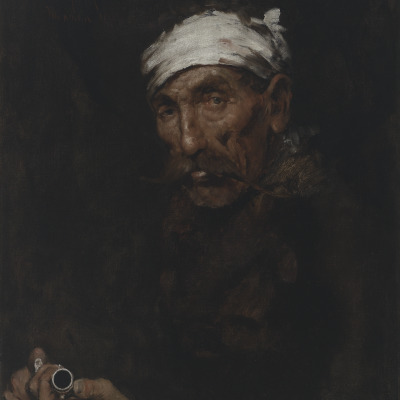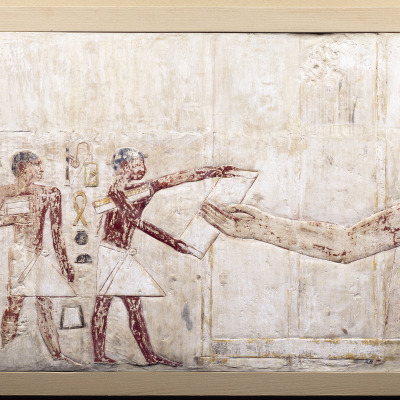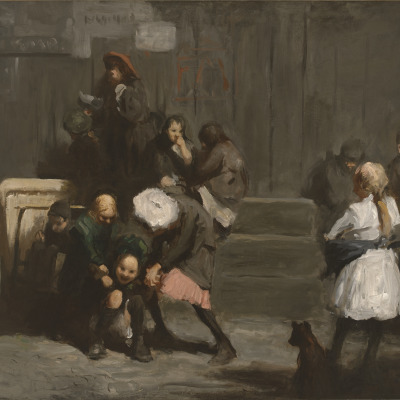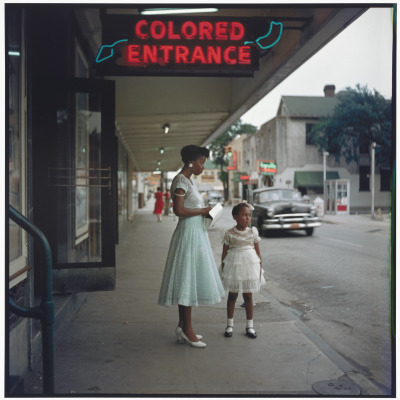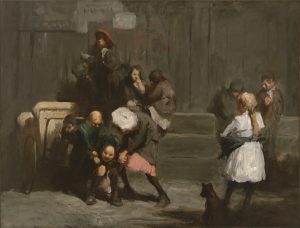
Narrative Art: What is Your Story?
Shared narratives can be found in art from many cultures and throughout time. Use this resource to encourage students to explore diverse narratives, discover their own personal narrative, and express that narrative through their own work of art.
Objective
The goal of this resource is to provide strategies to facilitate students’ exploration of narrative art. Using works from VMFA’s collection, students will learn how to discover the stories communicated in works of art and experience the shared human experience often expressed in these works. This process will lead students to write a personal narrative and then create their own narrative artworks.
We encourage you to adapt these strategies and select works that make sense for your curriculum and classroom. While this lesson incorporates a few specific works from VMFA’s collection, the strategies modeled can be used for any narrative work of art.
Introduce: What is Narrative Art?
Begin this lesson by introducing students to the concept of narrative art and its long history.
Narrative Art tells a story. It uses the power of the visual image to ignite imaginations, evoke emotions and capture universal cultural truths and aspirations. What distinguishes Narrative Art from other genres is its ability to narrate a story across diverse cultures, preserving it for future generations.
– The Lucas Museum of Narrative Art
Since the beginning of humanity, humans have used images to tell their stories. The carved stone relief pictured above dates to 2475-2195 BC—not long after the great pyramids at Giza were built! It is most likely from the tomb of a man named Methethy, a nobleman from Saqqara Egypt, an important burial ground for many pharaohs, royalty, and high officials. The large figure in this relief is Methethy, who is giving orders to four servants taking inventory of his possessions. Notice how he is much larger than the other figures. The scene follows the conventions of Egyptian art in which the most important figures, whether gods or humans, are depicted as larger than less important ones, such as servants.
Questions for discussion:
- What does this scene show you about life in ancient Egypt?
- Why might Methethy have chosen to have this scene depicted on his tomb?
- What impression does it give you of Methethy?
- What do you imagine life was like as one of his servants?
We can learn a lot about other places, times, cultures, peoples, and perspectives by exploring the stories communicated through art.
Connect: Create a personal connection to narrative art by asking students for examples of how they use images to tell their stories (Instagram, Snapchat, emojis, etc.).
Explore
Before sharing details or background information about the painting on the left with students, have them engage in exploration of the narrative in this piece using one of the following strategies. Each strategy invites students to spend time looking closely at the work. Click on the image to navigate to the detail page for this object where you can download a copy.
Build on Ideas with Object Information
After students have shared and discussed their ideas for the story being told in Kids painting, build on their ideas by providing some brief information about the work of art.
This painting depicts the children of the tenements of New York City during the early twentieth century. A group of rowdy children are playing in the street, while one stands and smokes a cigarette. The term kids, referencing young goats, was used to describe working class children who were usually unsupervised. The artist of this painting, George Bellows, moved to New York City from Ohio in 1905 and was greatly influenced by the urban experience. This painting, created in 1906, was one his first paintings that depicted life in the tenements.
Use the following prompts to extend students’ thinking and make connections with new ideas:
- How is this painting connected to something you already know about?
- What new ideas or impressions do you have that extended your thinking in new directions?
- What is challenging or confusing? What do you wonder about this painting now that you have some more information?
Engage
Have students study this photograph and, individually or in groups, write a narrative from the viewpoint of one of the figures in this photograph (the adult or child) or the artist (the photographer).
To prompt students, you can use the following strategies:
Build on Ideas with Object Information
Ask students to share their ideas. Build on their ideas by providing some brief information about the work of art.
Taken in 1956, this photograph was part of Gordon Park’s photo essay for Life magazine. This series followed the daily life of the Thorton family who lived in segregated Mobile Alabama. During a time dominated by images of social unrest and protest, Parks chose to focus on intimate scenes of everyday life to evoke awareness of our shared humanity.
Creative Writing Activity
After discovering new perspectives or shared experiences communicated through artworks, have students share their own story by writing a personal narrative. Use this worksheet to help students structure their narrative: Create a Personal Narrative.
Once students develop their ideas, they can create a short personal narrative which could take the form of a poem or short story.
Art Making Activities
Students can use many different methods to create their own narrative artworks. The following projects serve as examples.
Graphic Novel Style Artwork
A Graphic Novel is a novel, narrative, or story created in a comic book format. This format allows the art to drive the storytelling. Teachers can refer to librarians or media specialists for suggestions of graphic novels for students to use as examples.
PROCESS
- Have students use the Create a Graphic Novel Style Artwork planning form to organize their ideas. Once they have a plan, students can begin working on their final artwork.
- Provide students with a choice of a variety of paper shapes and sizes. Have students separate their paper into their chosen number of frames using a pencil and a ruler.
- Allow students to sketch their images using pencil.
- When ready, students may complete their work using the media of their choice.
- When complete, encourage students to share their work with classmates.
Suggested media: colored pencil, graphite pencil, watercolor paint, marker
Alternatively, students create their narrative digitally using photo software.
Narrative Illustration
Students may select one scene from their narrative to illustrate through the media of their choice.
PROCESS
- Have students use the Illustrate Your Story planning form to create several thumbnail sketches then choose their favorite sketch to use in the development of their final work.
- Provide students with a choice of a variety of paper shapes and sizes.
- Allow students to sketch their image using pencil. Encourage them to use all of the space and to create a foreground, middle ground, and background for their image.
- When ready, students may complete their work using media of their choice.
- When complete, encourage students to share their work with classmates.
Suggested media: colored pencil, oil pastel, watercolor paints, collage, mixed media
SOL Connections
VISUAL ARTS
6.3 The student will communicate personal ideas, experiences, and narratives through the creation of works of art, using a variety of media
6.14 The student will use critical inquiry skills when describing, responding to, interpreting, and evaluating works of art.
6.19 The student will explain the means by which works of art evoke personal sensory, emotional, and aesthetic responses.
7.4 The student will communicate ideas, experiences, and narratives through the creation of works of art, using traditional and contemporary media.
7.11 The student will analyze how art and culture influence each other.
7.17 The student will analyze, interpret, and evaluate works of art, based on personal and contextual information.
7.20 The student will interpret ways that social and cultural beliefs can influence responses to works of art.
8.6 The student will communicate ideas, experiences, and narratives through the creation of original works of art, using selected media.
8.12 The student will describe how works of art are influenced by social, political, and economic factors.
8.17 The student will communicate how personal experiences influence critical interpretations and evaluations of works of art.
8.20 The student will analyze purposes, values, and meanings of works of art.
AI.2 The student will identify and use steps of the design process, including brainstorming, preliminary sketching, planning, reflecting, refining, elaborating, and researching, in creative problem solving.
AI.3 The student will communicate ideas in works of art by identifying and using steps of an artistic process, including selecting media and incorporating elements of art and principles of design.
AI.5 The student will employ a variety of subject matter, including cultural or social concepts, to express ideas in original works of art.
AII.2 The student will make critical and reflective choices to create works of art.
AII.6 The student will express personal beliefs and values in works of art.
AII.8 The student will employ elements of art, principles of design, and a variety of media to express meaning in works of art and design.
AII.10 The student will use drawing media and processes to plan for and create works of art.
AIII.4 The student will use the artistic process to develop and inform artistic vision/voice.
AIII.12 The student will explain how themes throughout the history of art have been influenced by traditions, norms, values, beliefs, and events.
AIV.6 The student will select subject matter, symbols, images, and media to communicate ideas and themes.
AIV.10 The student will describe how art and culture reflect and influence each other.
AIV.11 The student will analyze the impact of historical and/or contemporary art on the development of personal style.
ENGLISH
6.7 The student will write in a variety of forms to include narrative, expository, persuasive, and reflective with an emphasis on narrative and reflective writing.
7.7 The student will write in a variety of forms to include narrative, expository, persuasive, and reflective with an emphasis on expository and persuasive writing.
8.7 The student will write in a variety of forms to include narrative, expository, persuasive, and reflective with an emphasis on expository and persuasive writing.
9.6 The student will write in a variety of forms to include expository, persuasive, reflective, and analytic with an emphasis on persuasion and analysis.
10.6 The student will write in a variety of forms to include persuasive, reflective, interpretive, and analytic with an emphasis on persuasion and analysis.
